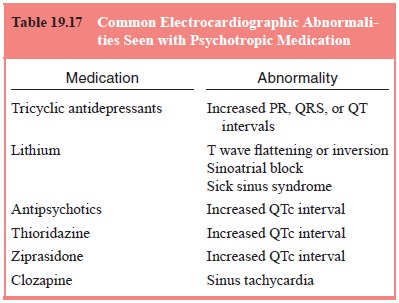Chapter: Essentials of Psychiatry: Clinical Evaluation and Treatment Planning: A Multimodal Approach
Brain Imaging
Brain Imaging
Several methods of brain imaging are available to
assist in di-agnostic assessment. Table 19.17 lists some indications for brain
imaging.

Computed tomographic (CT) scans and magnetic
resonance imaging (MRI) can be used to assess brain structure and are useful in
detecting such abnormalities as mass lesions (central nervous sys-tem
neoplasms, certain infections and hemorrhage), calcifications, atrophy, or
areas of infarction. Mass lesions should be suspected in situations in which
focal or lateralizing abnormalities such as focal weakness, unilateral
disturbances in reflexes and increased pupil-lary size are found during the
neurological examination. Other situ-ations that call for brain imaging include
the work-up of a patient with dementia to look for brain atrophy or lacunar
infarctions; the evaluation of new-onset psychosis, acute onset of aphasia or
mem-ory loss and neglect syndromes; the evaluation of normal-pressure
hydrocephalus (a syndrome characterized by a wide-based gait, de-mentia and
urinary incontinence); and demyelinating conditions.
Whereas CT and MRI provide visualization of brain
struc-ture, positron emission tomography (PET), single photon emis-sion
computed tomography (SPECT) and regional cerebral blood flow allow
investigators to study brain functioning by assessing which areas of the brain
are stimulated during various types of mental activity.
Related Topics